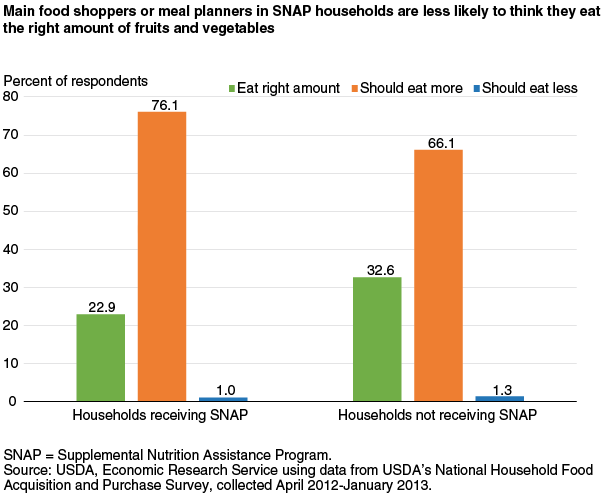FoodAPS Data Now Available to the General Public
- by Elizabeth Larimore, Elina T. Page and John A. Kirlin
- 12/5/2016
USDA’s National Household Food Acquisition and Purchase Survey (FoodAPS) is designed to spur research on critical issues related to Americans’ food choices from the array of options in stores and eating-out places. FoodAPS is the first nationally representative survey to collect comprehensive data about household food purchases and acquisitions. These data include quantities, expenditures, and nutrition information for food and beverages purchased from grocery stores and other food retailers (food at home), as well as prepared food purchased from establishments such as restaurants and fast food places (food away from home). FoodAPS also contains detailed information about foods acquired for free from schools, family, friends, home gardens, and food pantries.
FoodAPS data reflect purchases and acquisitions by all household members recorded over the course of 7 days between April 2012 and January 2013. A total of 4,826 households, comprising 14,317 individuals, completed the survey. The survey oversampled households that participate in USDA’s Supplemental Nutrition Assistance Program (SNAP) and other low-income households to provide a detailed picture of food demand among low-income Americans.
To protect the identity of surveyed households, access to the full FoodAPS data is restricted. ERS has now broadened access to the FoodAPS data by removing identifying variables and posting the nonrestricted data as public-use files on the ERS website. Users can download the public-use data in three file formats: SAS, Stata, and CSV. Documentation for the datasets (including all codebooks and the user guide) also is available for download. The public-use files contain nearly 1,000 variables capturing information about the types of foods and beverages purchased and acquired; where and when the foods were purchased or acquired; whether cash, SNAP benefits, or other tender were used for payment; demographic and income information on the person purchasing or acquiring the food; and many other variables. Nutrient information about purchased and acquired foods has been appended to the files.
Public-Use Files Include a Wide Variety of Data
The nonrestricted files provide access to a wide variety of data for analysis. For example, FoodAPS data include the date of the food purchase or acquisition, allowing examination of temporal spending and acquisition patterns. Households spent larger shares of weekly away-from-home spending on Fridays and Saturdays, indicating households are more likely to eat out on Friday and Saturday. Additionally, 18.8 percent of food-at-home spending occurred on Saturdays (higher than any other day), indicating Saturday as the most popular day for grocery shopping.
| Day | Share of weekly food-at-home expenditures (percent) | Share of weekly food-away-from-home expenditures (percent) | Share of weekly total food expenditures (percent) |
|---|---|---|---|
| Monday | 12.7 | 11.3 | 12.2 |
| Tuesday | 12.9 | 12.3 | 12.7 |
| Wednesday | 11.9 | 13.2 | 12.4 |
| Thursday | 13.2 | 12.8 | 13.0 |
| Friday | 15.3 | 18.4 | 16.4 |
| Saturday | 18.8 | 17.3 | 18.2 |
| Sunday | 15.3 | 14.7 | 15.1 |
| Source: USDA, Economic Research Service using data from USDA’s National Household Food Acquisition and Purchase Survey, collected April 2012-January 2013. | |||
FoodAPS respondents were asked a series of questions to gauge their perceived health and dietary habits. When the primary respondents (main food shopper or meal planner in the household) were asked if they think they eat the right amount of fruits and vegetables or if they should eat more, 32.6 percent of primary respondents in households not receiving SNAP benefits said they eat the right amount of fruits and vegetables. However, only 22.9 percent of those who reside in households that receive SNAP felt they eat the right amount of fruits and vegetables.
FoodAPS was undertaken to fill a critical data gap and support research on key national priorities, such as health and obesity, food insecurity, and food and nutrition assistance policies. By releasing FoodAPS data through public-use files, ERS anticipates FoodAPS data will spark exploration of Americans’ food choices as new researchers are able to access these unique data.
This article is drawn from:
- FoodAPS National Household Food Acquisition and Purchase Survey. (n.d.). U.S. Department of Agriculture, Economic Research Service.
We’d welcome your feedback!
Would you be willing to answer a few quick questions about your experience?


